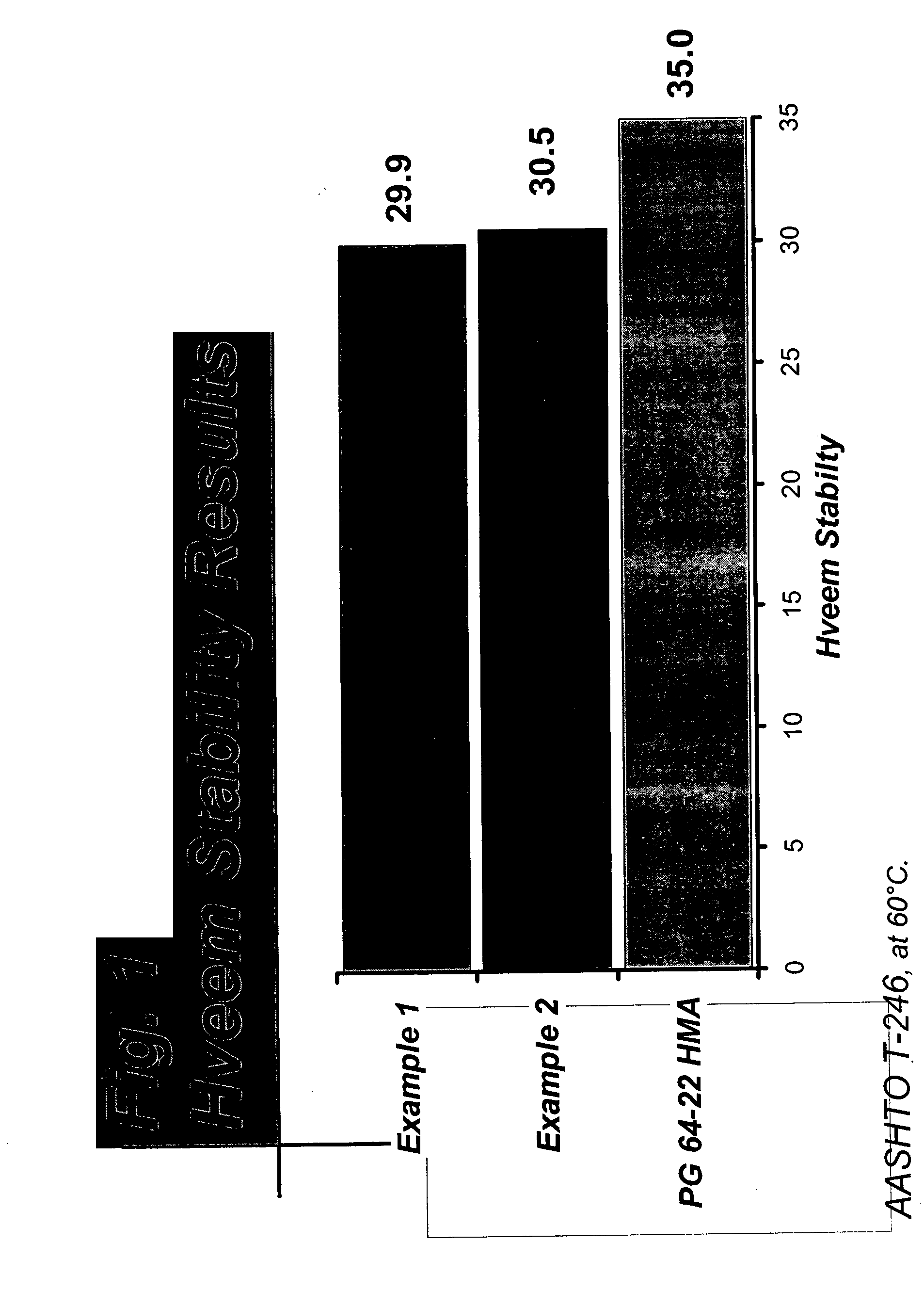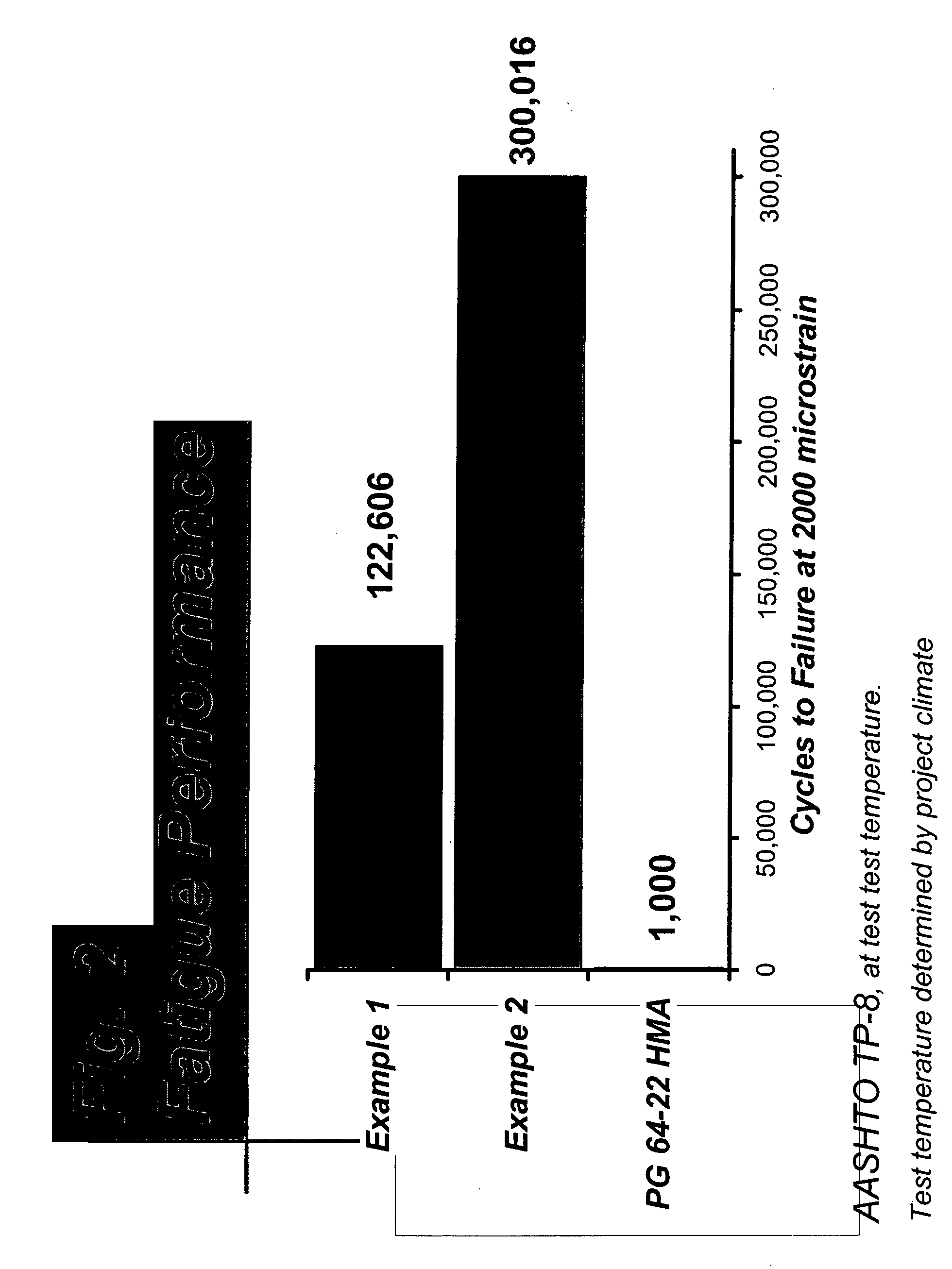Reflective crack relief pavement interlayer with improved load bearing capacity and method for designing interlayer
a technology of load bearing capacity and interlayer, applied in the field of interlayer, can solve the problems of cracks in the old pavement reflecting through the new overlay, low strain tolerance and low resistance to reflective cracking, and still have cracking problems
- Summary
- Abstract
- Description
- Claims
- Application Information
AI Technical Summary
Benefits of technology
Problems solved by technology
Method used
Image
Examples
example 1
[0051] A typical HMA interlayer mix that included aggregate that included of 30% by weight natural sand was made. The Hveem stability of the mixture at 60° C. was 20 and the cycles to failure in the 4-point beam fatigue apparatus were 200,000 cycles at 10° C., 2000 microstrains, and 10 Hz. An interlayer mixture of the present invention containing aggregate that included 0% natural sand was made. The Hveem stability of this interlayer mixture at 60° C. was 29.9 and the cycles to failure were 122,606 cycles at 10° C., 2000 microstrains, and 10 Hz. The interlayer of the present invention had the following properties: Pb=8.5% asphalt content based on the total weight of the mix; Gmm=2.408; Gmb=2.388; Gb=1.025 Va=0.8%; VMA=18.6%; Gse=2.753; Absorbed asphalt (Pba)=1%. This interlayer mixture of the present invention, when laid at an airport, showed a dramatically increased degree of dimensional stability compared to the typical interlayer. The interlayer of the present invention contained...
example 2
[0052] Another interlayer mixture of the present invention was made. It contained aggregate that included 0% natural sand. The Hveem stability of the mixture at 60° C. was 30.5 and the cycles to failure were 300,016 cycles at 10° C., 2000 microstrain, and 10 Hz. The interlayer had the following properties: Pb=8.4% asphalt content based on the total weight of the mix; Gmm=2.426; Gmb=2.392; Gb=1.025; Va=1.4%; VMA=18.4%; Gse=2.774; Absorbed asphalt (Pba)=1.2%. This interlayer mixture of the present invention, when laid at an airport, showed a dramatically increased degree of dimensional stability compared to the typical interlayer described above. The interlayer of the present invention contained the following amounts of various aggregate gradations:
TABLE 9Aggregate Gradations - Individual and BlendWash ManManSandSandMANNS FA-TypeB05B10 C21% in Blend553510100SIEVEBLEND25.0 mm100.0100.0100.0100.019.0 mm100.0100.0100.0100.012.5 mm100.0100.0100.0100.09.5 mm100.0100.0100.0100.04.75 mm99....
PUM
| Property | Measurement | Unit |
|---|---|---|
| thick | aaaaa | aaaaa |
| frequency | aaaaa | aaaaa |
| depth | aaaaa | aaaaa |
Abstract
Description
Claims
Application Information
 Login to View More
Login to View More - R&D
- Intellectual Property
- Life Sciences
- Materials
- Tech Scout
- Unparalleled Data Quality
- Higher Quality Content
- 60% Fewer Hallucinations
Browse by: Latest US Patents, China's latest patents, Technical Efficacy Thesaurus, Application Domain, Technology Topic, Popular Technical Reports.
© 2025 PatSnap. All rights reserved.Legal|Privacy policy|Modern Slavery Act Transparency Statement|Sitemap|About US| Contact US: help@patsnap.com



